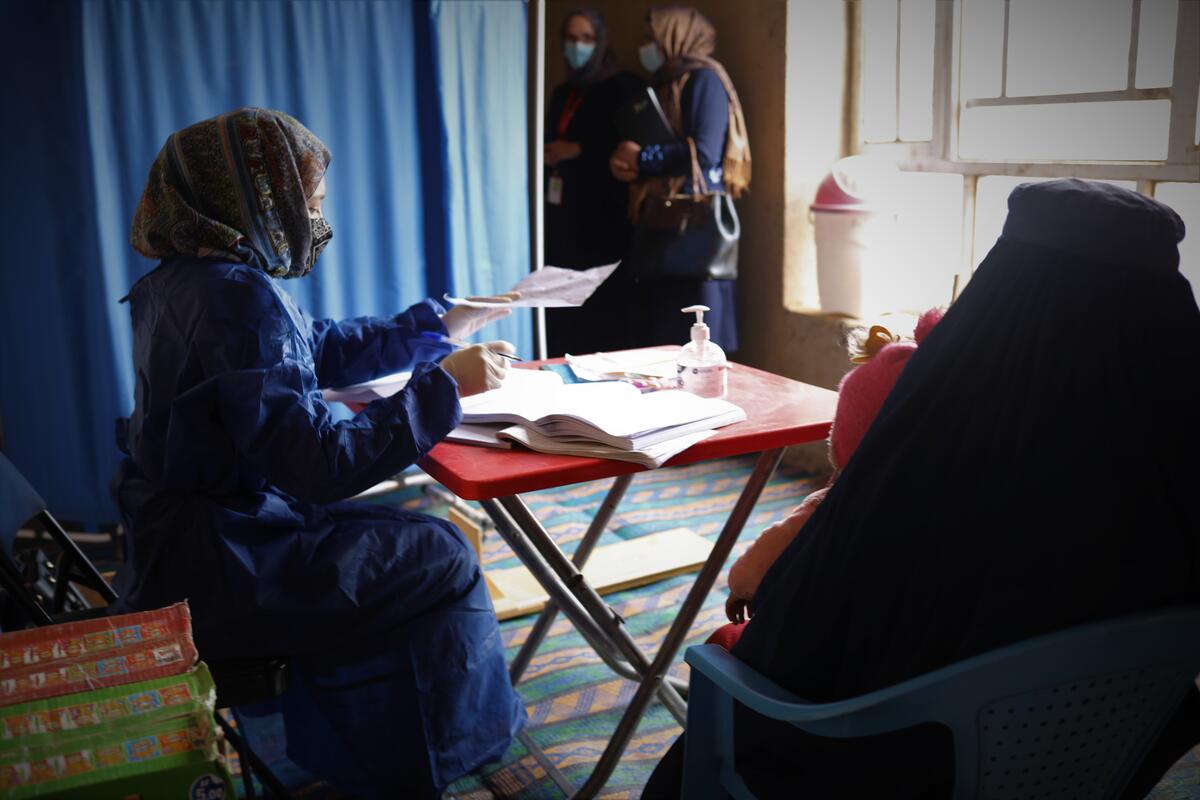Hope for a healthy future
The world is facing a child rights crisis on an unprecedented scale, where a confluence of issues mean investing in children is now more critical than ever
We all want children to live healthy and happy lives, safe from harm and hunger. But children today are facing a very different reality. Humanitarian crises are having disastrous effects on children’s health worldwide. The triple threat of conflict, Covid-19 and climate crises are reversing gains made in child survival in recent decades. The world is facing a child rights crisis on an unprecedented scale.
Health service disruption in crises
Children are affected most severely when essential health and nutrition services cannot be delivered. Child mortality is even higher in crisis settings. In 2019, child mortality rates in countries identified as fragile were on average almost three times higher than in non-fragile countries. With Covid-19 and the increased number of conflicts since 2019 these rates have likely escalated.
Already weak health systems were overwhelmed by the pandemic, leading to the disruption of routine health and nutrition services, ill health and death. In 2021, 25 million children missed out on routine vaccinations, making them more vulnerable to diseases such as measles and polio. Climate-related shocks, such as droughts, cyclones and heatwaves, pose dangerous threats to children’s health. Lack of water, sanitation and hygiene services make children more vulnerable to diarrhoea or cholera, two of the primary threats to children’s survival. Conflict is a driver of health risks to children: it puts children at immediate risk of physical harm, may force them to move away from their homes, denies them access to healthcare services, and causes widespread damage to health facilities and infrastructure. In some contexts, conflict puts healthcare workers and facilities in the direct line of fire. In the first four months of this year alone, the World Health Organization recorded 160 attacks on healthcare facilities in 11 countries and territories, resulting in 97 deaths. Basic services become almost impossible to access, with disastrous effects on the health and well-being of children.
most vulnerable are hardest hit
Afghanistan is facing one of the most significant humanitarian crises in the world. Over the past year, Save the Children has reached about 300,000 children with health services and about 230,000 children with nutrition services, but the remaining needs are significant. During a recent trip to the country, I met with staff from our mobile health teams who work in remote village locations, providing life-saving primary, newborn and maternal healthcare, nutrition and mental health services. I saw first-hand how we treated children for malaria and diarrhoea and provided routine vaccinations against diseases such as measles. Save the Children has talked to children in seven provinces across Afghanistan about the effects of the crisis on their lives and their access to health care. We found that children are increasingly unable to access or afford healthcare. Children told us that the reduction in household income was a big challenge because families simply could no longer afford transport and medication despite a nearby clinic remaining open. Children explained to our staff that even if they could go to a clinic to access services there were not enough doctors or medication when they got there.
Seven years of conflict in Yemen has had disastrous consequences on the health and well-being of children. Frequent attacks on health facilities and staff are putting the lives of children, parents and health workers at risk. During consultations with children and other community members they told us that people hesitate to seek much-needed health services at healthcare facilities because they are concerned for their safety. These attacks have led to the disruption of routine services, including urgent care for pregnant mothers, treating children for malnutrition, delivering vaccinations or providing for professional mental health and psychosocial support services. Parents of sick children are unable to reach medical care safely and in time, which can lead to deadly consequences.
Three steps to ensure access
To ensure access to health care and nutrition for children experiencing conflict and other crises, the following key steps are essential.
First, we need multi-year funding from the international community to ensure continuity in providing quality healthcare services for children and communities. We know this will have a transformational impact on the quality of health services that children can access in humanitarian crises. Funding should go as directly as possible to local and national organisations to strengthen systems to make them more resilient to respond to humanitarian crises, while striving to continue delivering essential health services.
Second, we must reach the most vulnerable children. As part of this, we need to ensure that children can participate in and influence decisions made on the development and implementation of health services. Our work in Afghanistan and Yemen highlights that only then can we deliver informed health and nutrition services. Children know their own situation and needs best. Involving children and communities in our work helps to identify barriers to accessing health care and find effective and sustainable solutions
to overcome them.
Finally, children can only access essential health services when healthcare workers can do their job without fear of attack. This includes adhering to international humanitarian and human rights laws for the safety of health facilities, health workers, ambulances and patients. We need to protect healthcare workers and make sure that there is accountability for attacks on healthcare facilities.
Let us move forward together – because health is a political choice for children.












